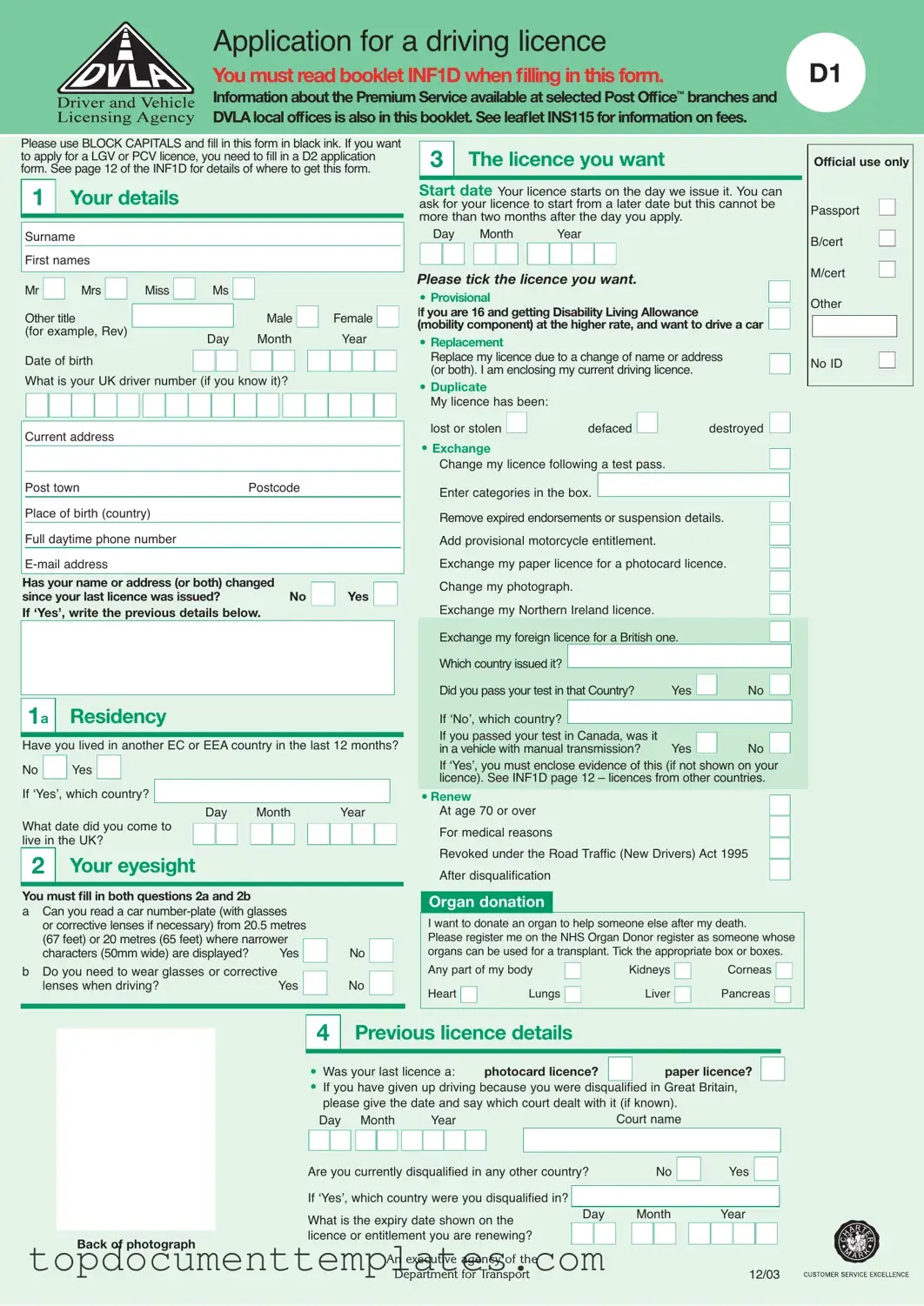The D1 DVLA form serves as a crucial tool for individuals seeking to apply for or update their driving licenses in the United Kingdom. This form encompasses a variety of essential sections that guide applicants through the necessary information required for processing their applications. Individuals must provide personal details, including their name, date of birth, and address, while also disclosing any changes to their circumstances since their last license was issued. The form includes specific questions regarding eyesight, ensuring that applicants can meet the visual standards required for safe driving. Additionally, it outlines various licensing options, such as applying for a provisional license, replacing a lost or stolen license, or exchanging a foreign license for a British one. Health considerations are addressed, with applicants required to disclose any medical conditions that could affect their ability to drive. Furthermore, the form mandates the submission of identity verification documents, which must be original and not photocopied. Lastly, the application process emphasizes the importance of accurate and truthful information, as providing false declarations can lead to serious legal consequences. Understanding these components is vital for a smooth application process and for ensuring compliance with UK driving regulations.
